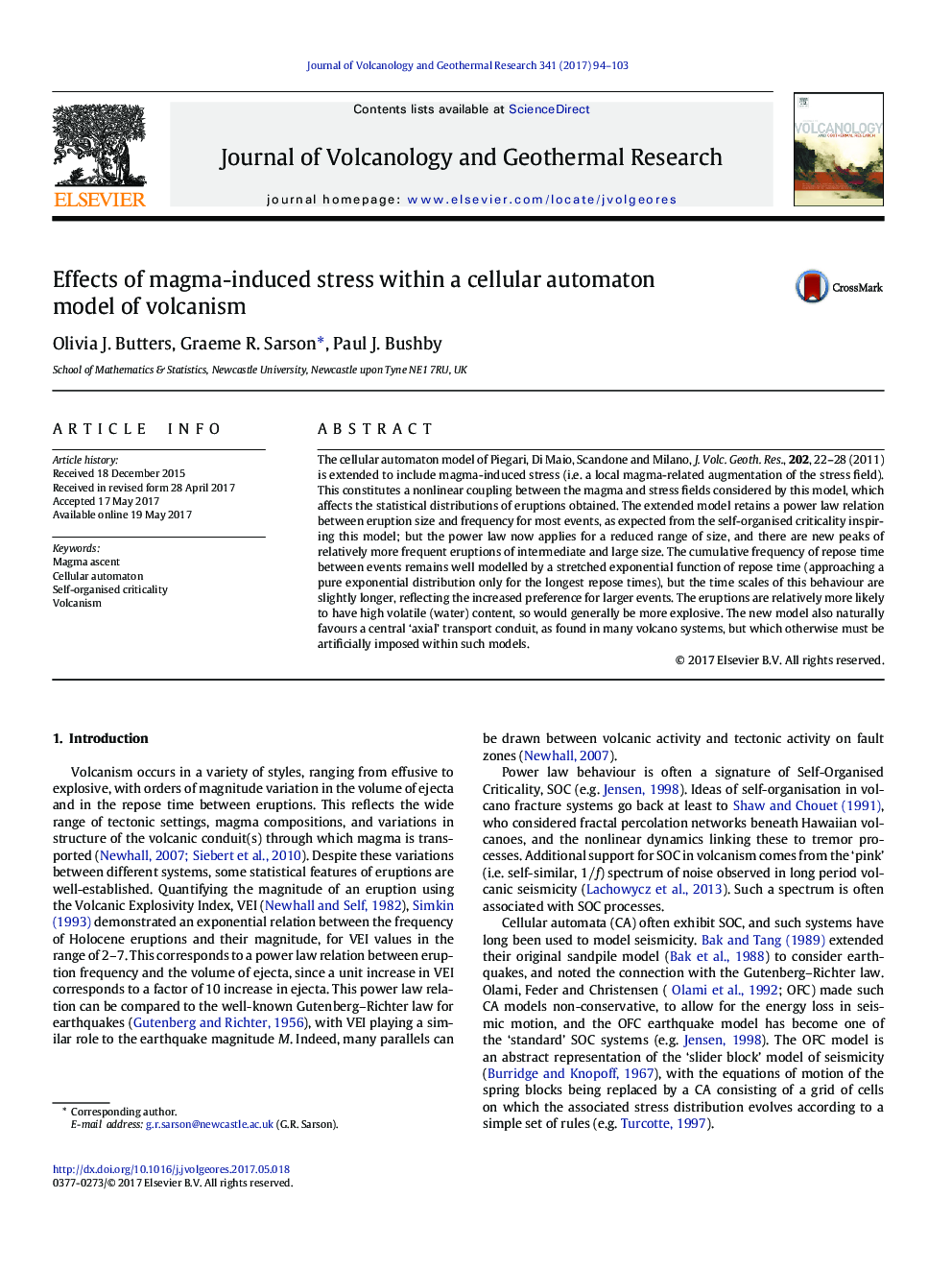| Article ID | Journal | Published Year | Pages | File Type |
|---|---|---|---|---|
| 5783830 | Journal of Volcanology and Geothermal Research | 2017 | 10 Pages |
Abstract
The cellular automaton model of Piegari, Di Maio, Scandone and Milano, J. Volc. Geoth. Res., 202, 22-28 (2011) is extended to include magma-induced stress (i.e. a local magma-related augmentation of the stress field). This constitutes a nonlinear coupling between the magma and stress fields considered by this model, which affects the statistical distributions of eruptions obtained. The extended model retains a power law relation between eruption size and frequency for most events, as expected from the self-organised criticality inspiring this model; but the power law now applies for a reduced range of size, and there are new peaks of relatively more frequent eruptions of intermediate and large size. The cumulative frequency of repose time between events remains well modelled by a stretched exponential function of repose time (approaching a pure exponential distribution only for the longest repose times), but the time scales of this behaviour are slightly longer, reflecting the increased preference for larger events. The eruptions are relatively more likely to have high volatile (water) content, so would generally be more explosive. The new model also naturally favours a central 'axial' transport conduit, as found in many volcano systems, but which otherwise must be artificially imposed within such models.
Related Topics
Physical Sciences and Engineering
Earth and Planetary Sciences
Geochemistry and Petrology
Authors
Olivia J. Butters, Graeme R. Sarson, Paul J. Bushby,
